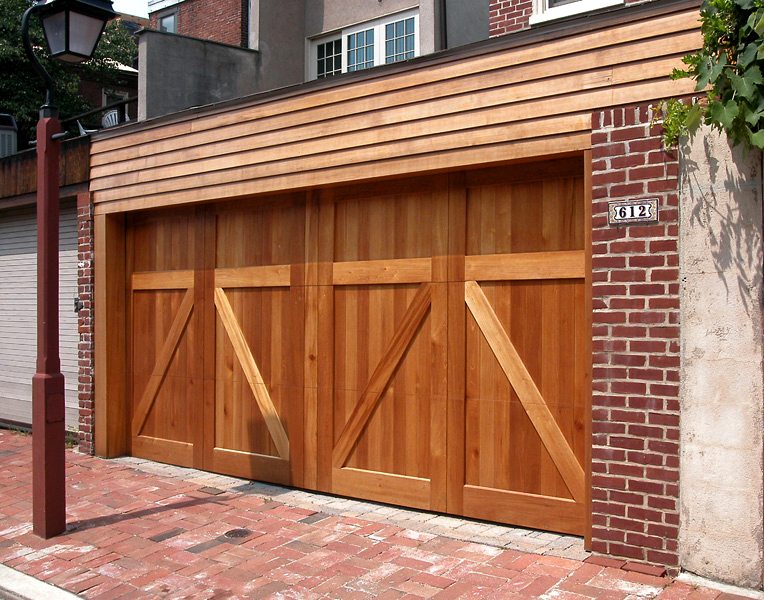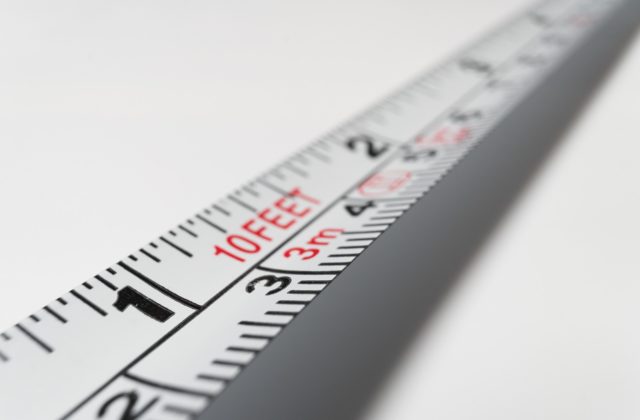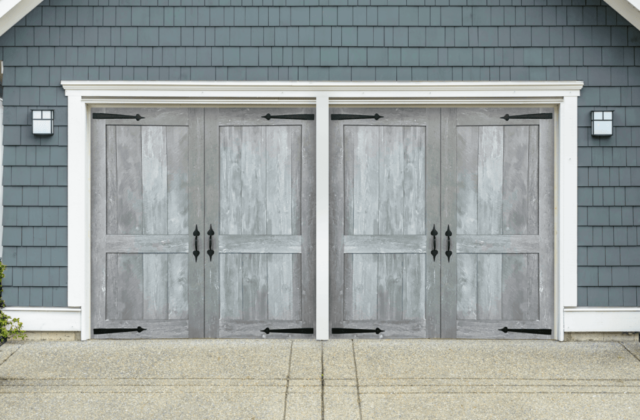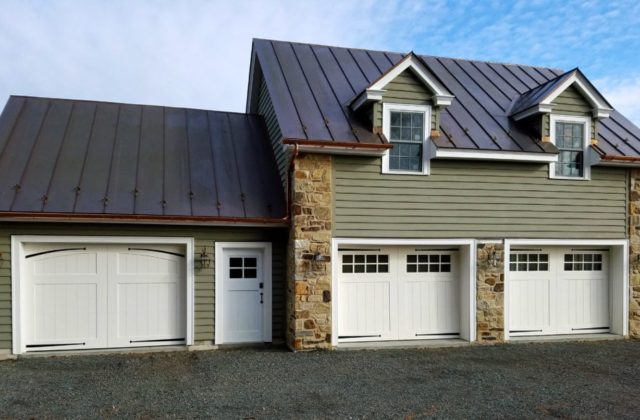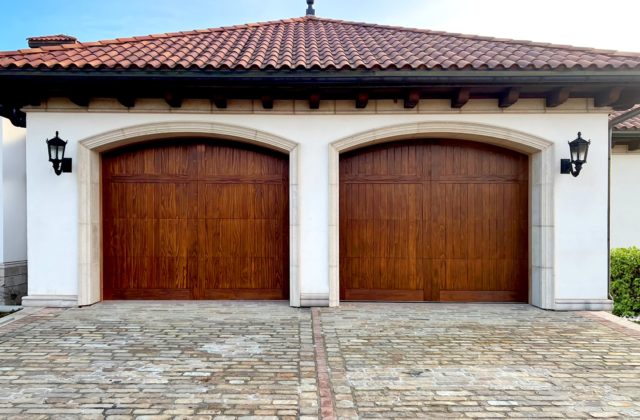There are a lot of little pieces that must come together to balance a functional and well-maintained landscaping design. It can be overwhelming to try and ensure all these features work well together.
After reading this blog, you’ll have a full understanding of each of the characteristics to consider when you’re ready to enhance your exterior home design and the reasons why this project is beneficial to you now, and in the future.
Calculating Your Budget & Timeline
The first consideration is your renovation budget. Without a realistic idea of how much you can afford, you may overspend and buy items that don’t fit into your end vision. It’s also possible to enhance your landscaping, and your home’s curb appeal, without making over-the-top changes.
To help ensure you’re getting the best quality and value, you don’t have to rush and do everything at once. Gradual changes and updates help make the process more organized and make sure the final product is exactly what you want.
To set yourself up for success, outline three low, ideal, and maximum budgets. You should also outline a rough timeline so you have an idea of how long your project will take. This may change if you need to bring in outside vendors or have to wait for supplies to come in stock.
Outline Each Area of Your Landscaping
Each home is different and not all will have the same outside house design. Take note of each area you have so you know what spaces need to be working together to create a cohesive look. Below, we’ll highlight some common landscaping sections and ways to add or revamp the area.
Back Patio or Porch
Although this section may not be visible from the street, a well-designed back porch can be ideal for family gatherings and outdoor hangouts. Especially with your back patio area, it’s important to clearly define the purpose.
Some ways you could utilize this space are with an outdoor kitchen and large dining table or an above-ground fire pit with lots of exterior lighting surrounding the patio.
Front Patio or Porch
Compared to your backyard landscaping, your front porch design ideas are likely one of the first things someone will see when looking at your home. Consider this section one of your home’s first impressions.
Depending on the size of your front patio, this could be a simple, minimalistic design. The front area could also be a spot that changes seasonally with different decor or signage.
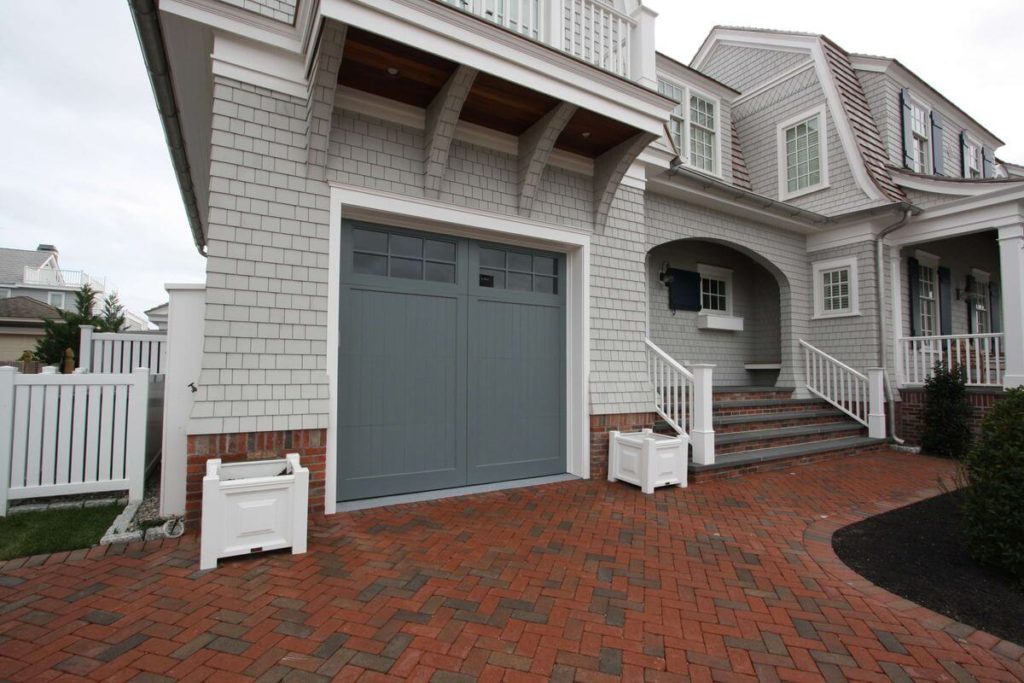
Driveway & Garage
Your driveway and garage aren’t likely the first thing you think of when you consider enhancing your exterior home design, but they also can be an important first impression of your home. A paved and refined driveway can go a long way when trying to create a harmonious presentation for your exterior.
Spruce up your exterior with these driveway design ideas.
- Line your driveway with florals, stones, or lights to create a defined path.
- Add a gate to the end of your driveway to create a higher sense of privacy.
- Implement a decorative mailbox at the end of your driveway that builds into your overall style.
Further in this blog, we’ll highlight the importance of a focal point in your landscaping. Many times, your garage door is a focal point so it’s essential that your garage door is intertwined with your exterior style.
Swimming Pool & Deck
If you have a swimming pool, you already have an idea of the purpose of the space. The key to your backyard designs with a pool will be what is necessary to make the space usable and visually appealing. We’d recommend having a small pool house or shed to store any cleaning supplies or inflatable toys.
Also, if you get a lot of sun in this particular area, a pergola or gazebo is a great way to stay outside longer without burning in the sun.
Garden
You can have a lot of fun creating a themed garden that is functional and eye-catching. Whether you’re growing vegetables or large flower patches, this is an important element of your outside house design.
After you’ve defined each area, you should consider how you’ll be using each space. By knowing the purpose of each section, you can determine what key architectural design elements should be incorporated. This helps reduce the risk of overbuying decorative elements and crowding the space with unnecessary items.
Trim Down to the Necessities
The saying “less is more” rings true when it comes to your exterior home design. If you have a lot going on outside, it can make the space unusable or cramped. Think about the interior of your home, if things are piled up or super busy in a room, you’re not able to effectively move about.
Eliminating outdoor clutter goes beyond furniture and decorations. Scan your landscaping to see if you have tree stumps, rocks, or large bushes that may cause your exterior to look crowded.
If there are natural features that you’re looking to get rid of, these should be your first priority. That way, you can start with a clean slate.
As you’re deciding what to get rid of, think of the purpose of each space. For example, if the purpose of your patio is to have backyard hangouts, you probably don’t want a large rock in the middle of the ground. On the other hand, if you’re not spending your evenings hanging out on your front patio, you likely won’t use chairs and a table in that space.
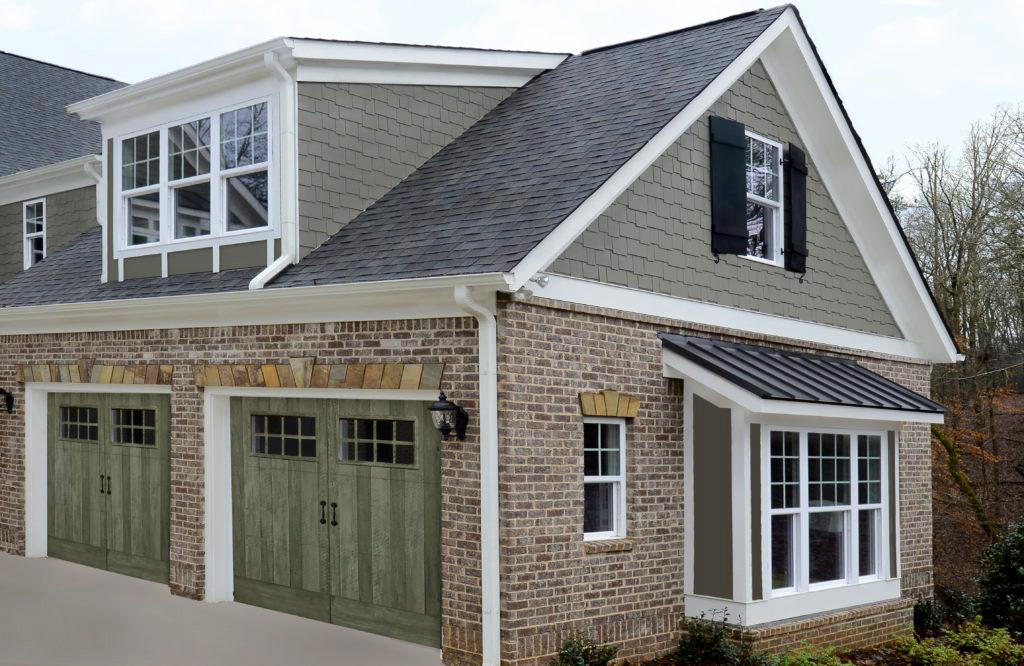
What’s Your Landscaping Style?
Once you’re ready to start designing the exterior of your home, the first step is to define your style. Without a clear definition, you may be left with an incohesive look.
If you’re not sure what style you want, you can research the most popular trends or find inspiration photos to get an idea of what would work best for your home. You should also consider what your interior style is, to ensure there’s a natural flow of each space.
Your landscaping depends on a few factors, which include the following
- Location/Climate. Since all these elements are outside and interacting with all kinds of weather elements, you must consider how the temperatures will affect them. For example, a coastal home will have different requirements than a home tucked away in the woods.
- Home Color. The exterior color of your home, or the siding of your home is an important consideration so you’re not using contradictory colors.
- Building Materials. While it’s good to have complementary materials within your architectural design elements, having too many different materials can make things look unorganized or overcrowded.
- HOA Regulations. Logistically, if you’re in one, some styles that involve more heavy-duty construction may need to be approved by your local HOA committee. An HOA may regulate colors, structure sizes, and other exterior elements.
Find Your Focal Points
Just like every yard has different elements that define its exterior, there are also different focal points. Common focal points could be your front door, garage door, or a large tree or sculpture.
Once you have your focal point(s), you’ll work outwards from that eye-catching design. A common focal point for a home is the garage door. If that’s the case, you can start by defining the exterior garage door style you want or already have.
Plan for Seasonal Changes
An exciting aspect of exterior architectural details is that they can change with the season. We recommend having foundational pieces that work in every season and then changing small things throughout the year.
Here are some examples.
- Exterior Lighting. Maybe you have open tiki torches in the summer and closed lamps in the winter.
- Table Landscapes. Throughout the year, centerpieces, placemats, or floral arrangements could change depending on the season.
- Front Porch Designs. Seasonal signs, floral arrangements, or decorations hanging on your front door are great ways to spruce up your porches every season.
Benefits of a Cohesive Exterior Design
Now that we’ve outlined the actionable steps you can take to enhance your exterior home design, let’s dive into why it’s a smart idea to take on this project.
- Increase Home Value. Any outdoor improvements you make, will not only increase visual appeal but also the value of your home, if and when you’re looking to sell.
- Create a Visually Appealing Design. The reason you’ve started this project is likely to create a visually appealing exterior home design. By going through these steps, you can end up with a functional outdoor space and an aesthetic atmosphere.
- Provide Shade in Hot Weather. Specific outdoor structures like pergolas, or overhead canopies can allow you to stay outside longer without burning in the sun.
- Enhance Overall Well-Being. Incorporating greenery and plants in your backyard can help reduce stress and sadness. Plus, having an additional space to relax and enjoy the outdoors can help you feel better as well.
- Contribute to a Healthy Environment. The positive impacts of greenery and plants go beyond your well-being. Sustainable landscaping also contributes to a greener environment.
